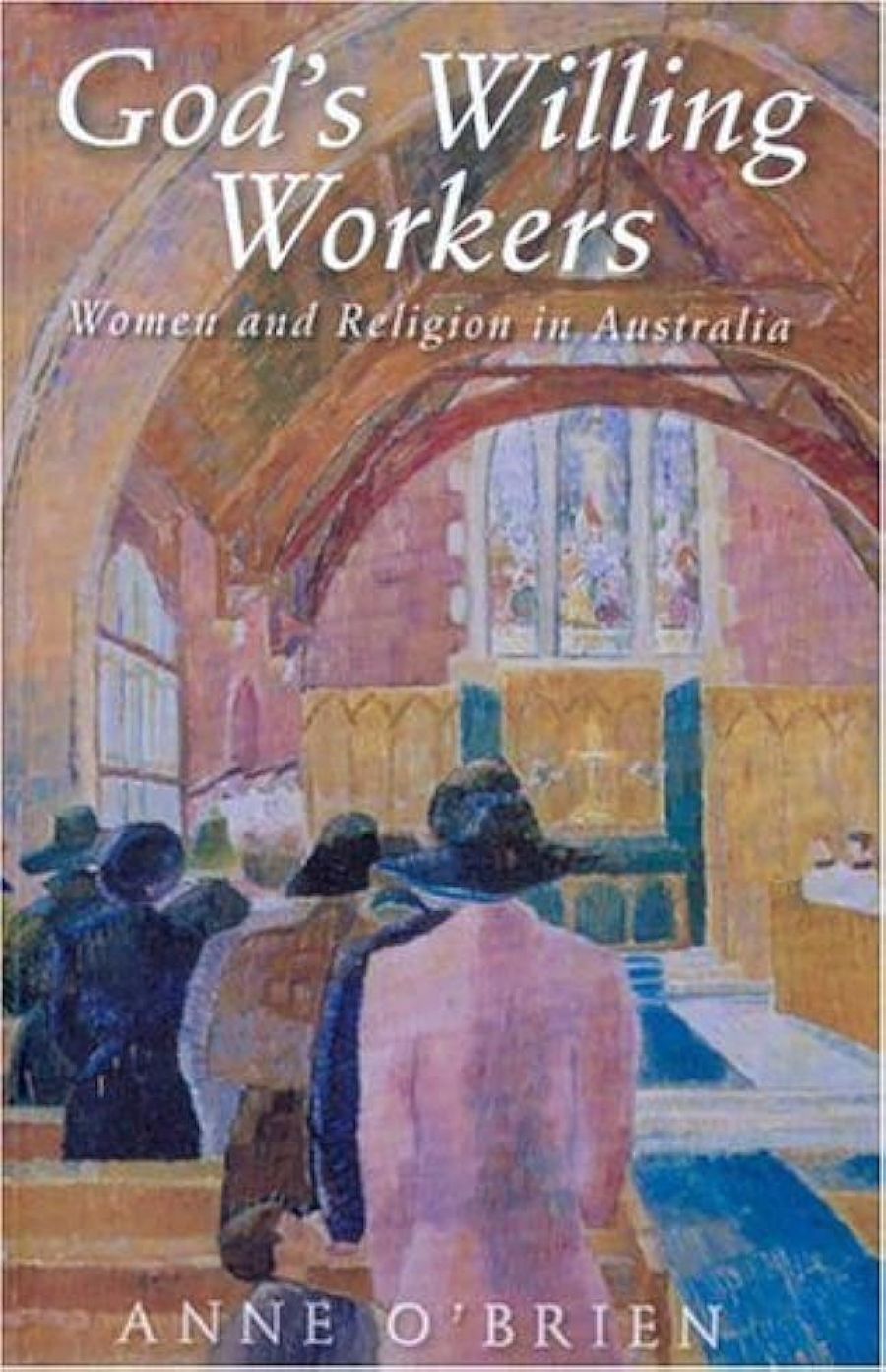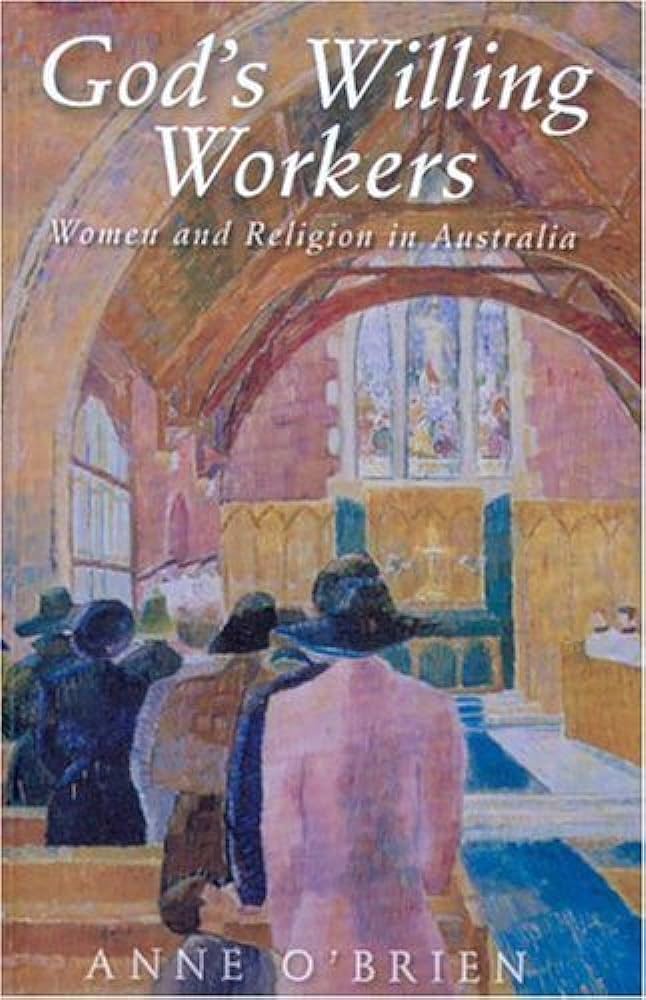
- Free Article: No
- Contents Category: Religion
- Review Article: Yes
- Article Title: No mercy
- Online Only: No
- Custom Highlight Text:
For Germaine Greer, the nuns at the Star of the Sea Convent in Melbourne provided ‘a terrific education’. ‘They really loved us,’ said Greer. Not so Amanda Lohrey. Her experience of a working-class convent school in Tasmania so scarred her that still today, visiting a church in Europe, she feels a ‘physical revulsion’ for ‘the naked martyrs, staked out, flayed alive, crumpled, bleeding’. For former Catholic schoolgirls, a reunion is a chance to laugh together over some of the more outrageous things taught to them by nuns. But Lohrey can look back only with bitterness, in particular on the nuns’ ‘intense but evasive’ preoccupation with sex. ‘Boys are after only one thing, girls. They’ll suck you dry like an orange,’ she was told. She cannot laugh.
- Book 1 Title: God’s Willing Workers
- Book 1 Subtitle: Women and religion in Australia
- Book 1 Biblio: UNSW Press, $49.95 pb, 314 pp
- Book 1 Cover Small (400 x 600):

- Book 1 Cover (800 x 1200):

Greer’s emotional attachment to the nuns, which persists despite her present dislike of Catholicism, has to be seen in the context of her feelings of being rejected by her mother, writes Anne O’Brien, in her timely and impressively researched history of women and religion in Australia, God’s Willing Workers. Many strong feminist women – Anne Summers, Susan Ryan, Veronica Brady – were educated by nuns. As were some strongly anti-feminist women, such as Babette Francis, a founder of the group ‘Women Who Want to Be Women’. So, were nuns loving and caring women who taught girls to be strong and independent, or were they harsh and punitive upholders of the most conservative teachings of the Catholic Church?
The answer is that they were both, for nuns, no more than any group, were not a homogeneous lot. What they taught depended to some extent on their individual characters, the school at which they taught, and the order to which they belonged. In the memories of some Catholic and ex-Catholic women, the Sisters of Mercy were ‘the sisters of no mercy’. In any case, the experience of being taught by nuns is not one that will be had by many Australian girls in the future, because there are very few ‘vocations’ these days. Either God has stopped calling, or girls have stopped listening. Moreover, many of the women who did become nuns have left their orders. Since 1960 some sixty-six per cent of women who entered the Sisters of Mercy convent in North Sydney have left. Yet, writes O’Brien, for a long time ‘religious sisters living in all-female houses taught and administered the most extensive alternative education in Australia’. Their influence on generations of young Australians cannot be overestimated. In Australia, from the nineteenth century onwards, women were the church’s main source of labour; they were indeed ‘God’s willing workers’.
Given that most of the major religions have always been deeply misogynistic, one might wonder why women would want to bother with them at all. But bother they did, and do. Indeed, women traditionally were seen as having a natural ‘bent’ for religion. From the time of the Sermon on the Mount, Christian discourse has extolled the feminine – meekness, humility, lowliness of spirit – and women have been upheld as exemplars of Christian values. At the same time, church teachings have tried to curb their sexuality, control their reproductive life, valorised them as mothers while expecting them to do the menial and dirty work, and cajoled them into being good women lest they led society astray.
O’Brien points out the intrinsic duality in the church, in authorising an unequal gender order while preaching to women the radical message that all souls are equal in the eyes of god. In recent years, feminist history has established the fear of women that underlies much church teaching, the universalising of male symbols in Christian theology and the omission of women from the gospels. But it has also shown that, despite these, many women were empowered by religious affiliation, finding it a vehicle for autonomy and sisterhood, and for reform movements such as temperance, votes for women and Aboriginal rights. Many used the radical message of equality and inclusion to empower themselves, their children and other women. There were, of course, always women who resisted the attempts of other women to make their religion recognise women’s equal role. Just as at the beginning of last century there were hundreds of signatures on a petition presented by women to prevent women getting the vote, today there are movements opposed to women priests, such as ‘Women Against the Ordination of Women’.
Most women, however, have never accepted the church’s teachings unquestioningly, but have been guided by their own sense of what is right and wrong. While the Catholic Church still officially bans contraception, the fertility of Australian Catholic women is no greater than that of any other women.
There is no more effective way of controlling any group than by claiming divine authority for their oppression. In this way, men throughout the ages have successfully hijacked religion, yet there have always been women who refused to accept their subordinate status. Despite a recent anti-feminist backlash, today there are obvious signs of progress, with the ordination of women in most denominations, the adoption of inclusive language, the curricula of religious studies classes in schools, and the teaching of feminist theology in universities and theological colleges.
God’s Willing Workers is a history of women in the Christian religion in Australia. It is an interesting and highly readable story, promoting an understanding of the history of religion, feminism and culture. It does not look at women in non-Christian religions, for whom domination by men is often much harsher and more rigid, and which would require a book on its own, or many books, to do the subject justice. All religions preach equality, but practise inequality. We must hope that believing women continue to challenge this false authority, and reclaim their religions for themselves.


Comments powered by CComment